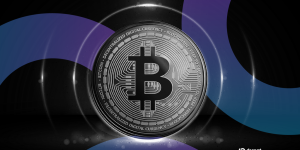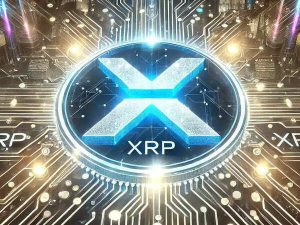XRP’s Market Crossroads: Understanding the Forces Reshaping Ripple’s Digital Asset

Ripple’s XRP is navigating a period of significant uncertainty as shifting market conditions, evolving regulatory developments, and intensified competition redefine its role in the digital asset ecosystem. Once touted as a leading solution for cross-border payments, XRP now faces pressure from emerging blockchain technologies, investor skepticism, and changing global liquidity flows. The asset’s pricing behavior has become increasingly volatile, driven by fluctuating sentiment and inconsistent demand. This article examines the evolving landscape surrounding XRP, explores the challenges influencing its market trajectory, and analyzes whether the token can adapt to the rapidly transforming dynamics of the cryptocurrency sector.
Evolving Market Conditions Redefine XRP’s Position
Cryptocurrency markets have undergone a structural shift over the past year, reshaped by institutional-grade investment products, more stringent compliance frameworks, and heightened scrutiny of digital asset utility. In this environment, XRP’s longstanding narrative as a bridge currency is being tested. Investors are now gravitating toward assets that demonstrate technological advancement, sustainable growth, and clarity around long-term usage.
XRP’s current market environment reflects these broader changes. Reduced volatility in leading cryptocurrencies has pushed traders toward assets with clearer fundamentals, while XRP continues to face mixed sentiment due to unresolved questions around adoption and strategic direction.
Regulatory Uncertainty Continues to Weigh on Performance
Despite progress in legal proceedings, XRP’s regulatory journey is far from resolved. Investors remain cautious as Ripple’s interactions with global regulators face ongoing examination. Although certain jurisdictions have offered partial clarity, the absence of a unified regulatory framework continues to influence XRP’s valuation and investor participation.
Market analysts argue that the token’s slow recovery is tied directly to this uncertain environment. Without comprehensive global recognition or a consistent classification across markets, XRP’s institutional adoption remains limited compared with peers advancing through more predictable compliance pathways.
Competition Intensifies Across the Payments Landscape
One of XRP’s greatest challenges comes from the rising number of blockchain platforms targeting the payments and settlement sector. Newer protocols offer enhanced speed, lower transaction costs, or integrated smart contract capabilities—features that surpass XRP’s conventional design.
These competing networks have leveraged ecosystem support and aggressive development strategies, drawing interest from financial institutions seeking more flexible, interoperable solutions. As innovations accelerate, XRP must confront the reality of a market that rewards diversification and rapid technological improvement.
Investor Sentiment Reflects a Divided Community
XRP’s investor base remains deeply committed, yet sentiment within the broader market is split. Long-term holders continue to advocate for the token’s utility, emphasizing its potential in cross-border remittances. Meanwhile, newer market participants, influenced by the rise of decentralized finance and tokenization platforms, question whether XRP can reclaim its former market momentum.
Trading behavior indicates sporadic surges followed by steep corrections, suggesting that confidence in sustained growth has weakened. Analysts believe the token’s ability to regain stability will rely heavily on tangible progress in adoption and ecosystem expansion.
Liquidity Dynamics Shift as Global Markets Mature
The maturation of digital asset markets has introduced new liquidity patterns. Institutional investors now prefer assets backed by transparent market data, regulatory cooperation, and clear monetary frameworks. XRP’s liquidity profile has fluctuated during this transition, with trading volumes reflecting cautious participation.
Global payment corridors—once seen as a key opportunity for XRP—are increasingly influenced by domestic digital currency initiatives and alternative blockchain configurations. These developments challenge XRP’s original value proposition and force the asset to redefine its competitive advantage.
Pathways for Renewed Growth
While XRP faces substantial challenges, it still holds potential for recovery. Opportunities include:
- Reinforcing its identity within global payments, particularly in regions with demand for efficient cross-border transfers.
- Strengthening technical capabilities, such as interoperability enhancements and operational upgrades.
- Cultivating institutional partnerships that highlight real-world implementation rather than theoretical utility.
- Expanding use cases beyond settlements, possibly through alliances with fintech developers.
A strategic pivot supported by transparent communication could help restore investor trust and position XRP for renewed relevance.
Conclusion: XRP at a Defining Moment
The future of XRP hinges on its ability to adapt to a market that no longer rewards stagnation. With technology evolving at unprecedented speed and regulatory standards tightening worldwide, the asset must demonstrate agility, innovation, and clear purpose. As the cryptocurrency ecosystem moves toward a more mature, utility-driven phase, XRP’s ability to redefine its narrative will determine whether it continues to play a significant role or becomes a relic of an earlier market cycle.




